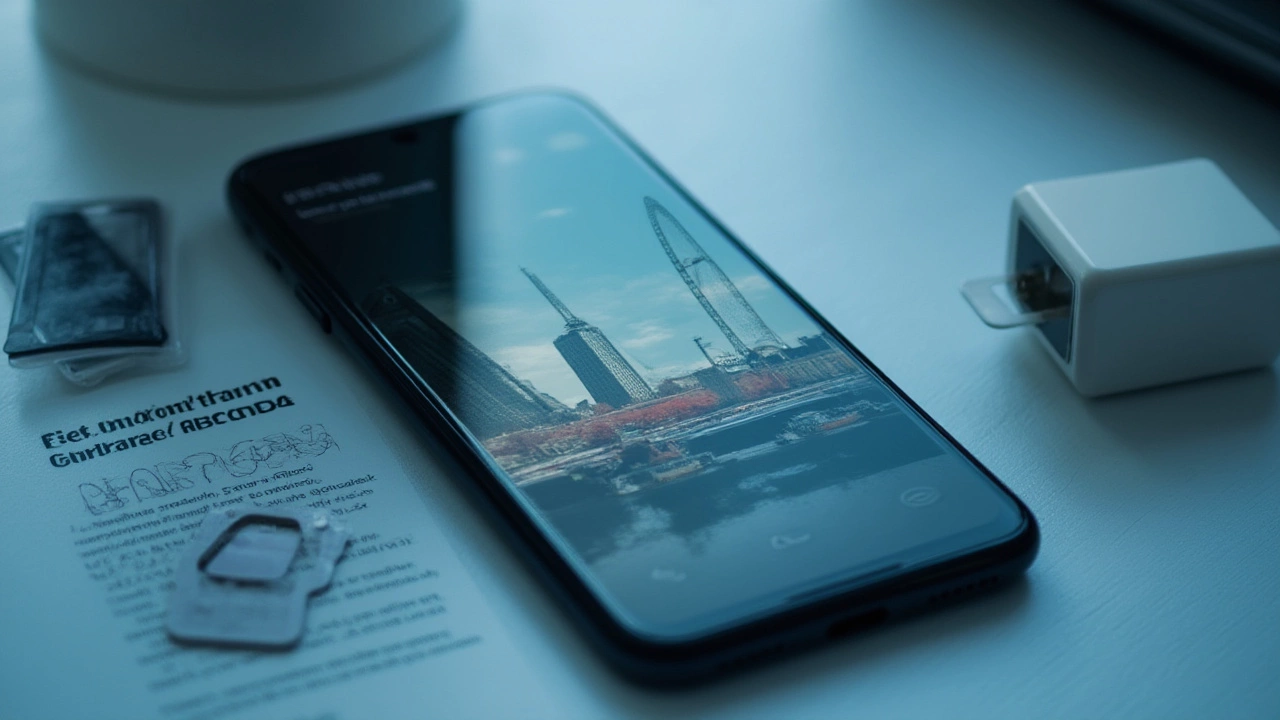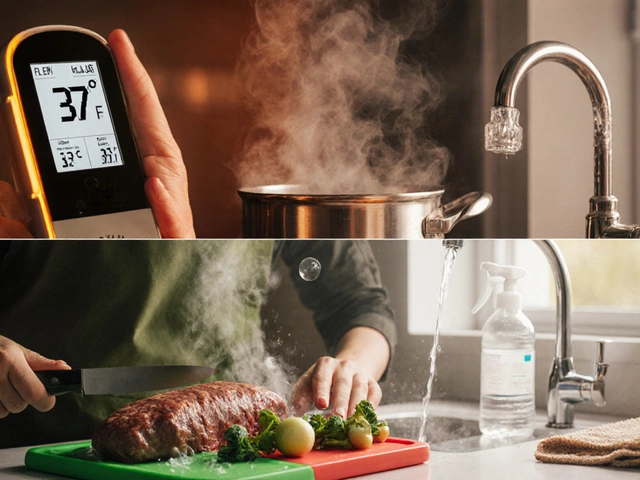Picture this: You’ve just landed at Heathrow, still bleary-eyed from the flight, and all you want to do is text your best friend a photo of your first double-decker bus. You pull out your phone, swipe to unlock, and—bam—your phone is looking for service, spinning, hesitating, maybe even demanding an unlock code you’ve never seen before. At that moment, the reality hits: can you actually use your US cell phone in London, or is it about as useful as an umbrella in a Wellington southerly?
How US Cell Phones Operate in London: Networks, Compatibility, and Surprises
Here’s the tea: not all phones are equal when it comes to hopping between countries. The big question is whether your US phone will work on UK networks. Phones speak in two "languages," or systems: GSM (used by UK carriers and most US ones like AT&T and T-Mobile) and CDMA (used mostly by US carriers like Verizon and a bit by Sprint). Out of the gate, you already need to double-check what your phone can handle. These days, most newer phones work across GSM and CDMA, but if yours is ancient (think pre-2017), you could be stuck.
US cell phone in London will mainly depend on your phone’s "bands," which basically means the radio frequencies it supports. The UK uses bands 3 (1800 MHz) and 20 (800 MHz) most for 4G/LTE. US phones, especially unlocked ones, now generally support these. Still, check your manufacturer’s website to confirm, especially if you crave nifty 5G speeds—those are still a bit of a patchwork!
Roaming sounds convenient: You land, your phone dings, and you have connection. But carriers aren’t exactly gentle when it comes to charges. Roaming rates can blow your mind (and your wallet)—think $10 or more a day just for basic use. T-Mobile’s Magenta Max, for example, includes basic international data and texting from $85/month, but speeds may crawl. Verizon’s TravelPass is $10/day, and AT&T International Day Pass gives you unlimited texts and data for the same $10/day. Don’t just assume your plan includes London or the UK–double check online or with your carrier’s app before you go, or you could rack up a nasty bill.
Here’s a quick breakdown of what you might face using your US cell phone in London, based on data from June 2025:
| Carrier | Daily Roaming Cost | Data Speed | Calls & Texts Included? | Extra Fees |
|---|---|---|---|---|
| Verizon | $10 | Full speed | Yes | None, but only in eligible countries |
| AT&T | $10 | Same as home | Yes | Cap at $100/month |
| T-Mobile | $0-50 (depending on plan) | 128Kbps or up (varies) | Limited/Yes | Premium speeds can cost more |
But don’t freak out yet. If your phone is unlocked, the whole London mobile scene opens up: you can pop in a local SIM card, usually for less than the price of a bagel in Covent Garden, and have local rates, fast data, and fewer money worries. More about that in a minute.

Unlocking Your US Phone: The Magic Key for Local SIM Cards
If your phone is locked to a carrier, it won’t accept a local SIM card. Carriers in the US have gotten better about unlocking, but you often have to finish paying off your phone or complete your contract first. Sometimes, they make you jump through hoops—call them, fill in forms, or use their website chat to make the request. Don’t wait until you’re boarding your flight to figure this out. Give yourself at least a week. Once unlocked, you’ll get a text or a notification that the phone is free, and you can test it with any SIM card (if you want to be absolutely sure, borrow a friend’s SIM just to check!).
Modern iPhones (from the X, XS and up), Samsungs (Galaxy S10 and newer), Google Pixels, and most Moto and LG devices can be unlocked and support global bands. If your phone is ancient or from a prepaid plan, you might be out of luck, and it could be easier to just grab a cheap unlocked phone for travel.
Why bother with unlocking your phone? It’s the difference between picking up a cheap, fast local plan at Heathrow versus juggling prepaid international calling cards or using only WiFi at every Starbucks you spot. Unlocked phones let you pick any network. In the UK, big names like EE, O2, Vodafone, and Three offer prepaid SIMs with generous data. For about £10-20 ($13-26), you can grab a plan with a hefty 10-20GB of data, unlimited calls and texts within the UK, and no roaming hassles. You could even buy your SIM before you leave the US from Amazon or a travel SIM site and just swap it in on the plane or at your hotel.
eSIMs are also growing popular. If your phone is iPhone XS/XR or newer (or an equivalent Android model), you can set up an eSIM for a UK carrier. This means no physical SIM swap—just scan a QR code, and you’re connected. Citymapper or Google Maps at your fingertips, no sweat. Check Airalo or Holafly for tourist eSIMs; they’re a lifesaver if you’re always misplacing those tiny little trays and pins.
Just make sure to back up your contacts and data, because switching SIMs (or eSIMs) doesn’t always play nicely with your existing setup. And remember: WhatsApp and iMessage still work over WiFi, so even without a UK number, you’re not really cut off from the world.

Travel Tips: Staying Connected, Avoiding Roaming Panic, and Using Your Phone Smarter in London
Some of the best things in London are spontaneous: following your nose into a food market, wandering inside a bookshop, or discovering a side street with shops you’d never seen online. But you’re going to need your phone for directions, mobile payments (Apple Pay is big in the UK), museum tickets, and all kinds of maps and translation apps. Here are a few tips to make sure you stay connected—and protect your bank balance.
- Download Offline Maps: Google Maps lets you save areas for offline use. Even if your phone plan lags, you won’t get lost in Soho.
- Set Data Limits: Avoid running up surprise costs by setting data usage warnings in your phone’s settings. Android and iPhones let you set alarms or even cut off mobile data past a certain threshold.
- Use Free WiFi Wisely: Train stations, coffee shops, hotels, and museums usually offer free WiFi. For a bit of peace of mind, install a VPN before your trip to protect your info on public networks.
- Update Your Apps Before You Go: Save on overseas downloads by updating everything while still in the States.
- Turn Off Background App Refresh: Sneaky apps eat up data even while you sleep. Disable background app refresh for any apps you don’t need updating in real time.
- Know Emergency Numbers: The UK’s emergency services number is 999, but 112 works just as well (and on any phone worldwide). No SIM? Emergency calls still work on any mobile.
- Switch to Airplane Mode: If you’re really worried about surprise roaming fees, use airplane mode and turn WiFi back on. You’ll still get WhatsApp, iMessage, FaceTime, and emails over WiFi only.
- Dual SIM Phones: If your phone supports dual SIMs or an eSIM, keep your US SIM in but use a local SIM for data and local calls. Your friends and family in the US can stick to your old number on WhatsApp and iMessage, but you’ll have a local number for taxis, restaurant bookings, and British mates.
The good news? The UK isn’t picky about visitors using their networks. If there’s a plug converter in your bag (UK uses Type G plugs!), then every other problem can be solved with a trip to a phone shop or a bit of Googling. You can even pick up cheap prepaid plans in grocery stores, airports, or vending machines. Some places let you activate a SIM just by showing your passport. It’s mind-blowingly easy compared to, say, Japan or South Korea where foreign SIMs can be a hassle.
And here’s a bonus: plenty of UK networks now offer “roam like at home” plans for use in the EU, so if London is just your first stop, you can keep that same SIM as you hop through Paris, Amsterdam, or Barcelona. Your journey might have started in New York or LA, but the moment you swap in that local SIM (or load an eSIM QR code), it genuinely feels like you’ve landed somewhere new—digitally and physically.
If you only remember one thing: check if your phone is unlocked and supports UK bands before you go. If it’s not, get it unlocked, and research your best SIM options. Those few minutes of prep will save you hours of stress and piles of cash. Travel is meant to be exciting, not full of connection anxiety. Now you know your phone can keep up—you’re set to explore Tolkien’s stomping ground or snap a selfie outside Platform 9¾ without missing a beat.







